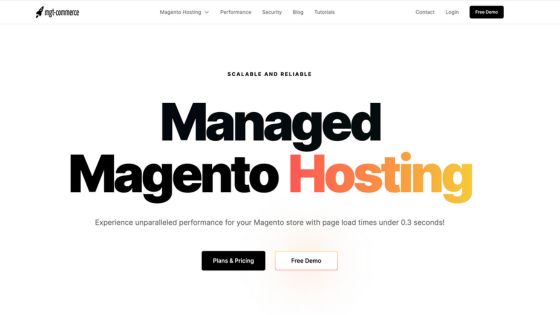
In the rapidly evolving landscape of creative industries, design agencies are continually seeking innovative ways to expand their capabilities and stay ahead of the competition. Growth in this sector is not merely about acquiring new clients but also about enhancing operational efficiency, embracing technological advancements, and scaling services to meet diverse client needs. One strategic approach that has gained prominence is the utilization of right-of-use assets. This concept, rooted in modern accounting practices, offers design agencies a pathway to access essential resources without the burdens of ownership, thereby fueling growth and agility.
Understanding Right of Use Assets
A right-of-use asset represents a lessee’s right to use an asset over the term of a lease. This concept emerged from changes in accounting standards—specifically, International Financial Reporting Standard (IFRS) 16 and the Financial Accounting Standards Board’s (FASB) Accounting Standards Update (ASU) 2016-02, Topic 842 in the United States. These standards revolutionized lease accounting by requiring companies to recognize almost all lease agreements on their balance sheets.
Under the previous guidelines, operating leases were kept off the balance sheet, allowing companies to report lower liabilities. However, the new standards aim to increase transparency and comparability by ensuring that all leases are accounted for consistently.
Key Elements of Right of Use Assets
- Lease Recognition: Companies must recognize a right of use asset and a corresponding lease liability at the commencement date of the lease.
- Measurement: The right-of-use asset is initially measured at the amount of the lease liability, adjusted for any lease payments made at or before the commencement date, plus any initial direct costs.
- Amortization: Over the lease term, the right-of-use asset is amortized, and the lease liability is reduced as payments are made.
How Design Agencies Utilize Right-of-Use Assets to Grow
Design agencies, whether boutique firms or larger establishments, rely heavily on specialized equipment, creative software, and conducive work environments to deliver high-quality services. Acquiring these assets outright can require significant capital investment, which may not be feasible, especially for smaller agencies or those in growth phases.
Access to Essential Equipment and Technology
Leasing allows design agencies to access the latest computers, servers, printers, and other high-end equipment without the substantial upfront costs associated with purchasing. Technology in the design world evolves rapidly, and leasing provides the flexibility to upgrade equipment as needed, ensuring that agencies remain at the forefront of innovation.
- Software Licenses: Many critical design tools, such as Adobe Creative Cloud, offer subscription-based models. Under the new accounting standards, long-term software subscriptions may also be considered right-of-use assets, requiring capitalization.
- Hardware Upgrades: Leasing agreements often include provisions for upgrading equipment, allowing agencies to maintain cutting-edge capabilities without additional capital expenditures.
Flexible and Scalable Office Spaces
The physical workspace is a significant factor in fostering creativity and collaboration. Leasing office space is a common practice, and recognizing these leases as right-of-use assets aligns with the new accounting standards.
- Co-working Spaces: The rise of co-working environments offers agencies flexible lease terms, enabling them to scale up or down based on project demands.
- Strategic Locations: Leasing in prime locations can enhance an agency’s visibility and accessibility to clients without the prohibitive costs of property ownership.
Financial Flexibility and Cash Flow Management
By leasing assets, design agencies can preserve cash and maintain liquidity, which is crucial for funding day-to-day operations and investing in growth opportunities such as marketing, talent acquisition, and research and development.
Additionally, managing cash flow effectively often involves setting up secure payment methods, for which knowing what is a voided check can be useful. A voided check is a check that has been canceled, typically used to provide bank account information for setting up direct deposits or automatic payments.
- Cost Predictability: Lease agreements often come with fixed payments, simplifying budgeting and financial planning.
- Risk Mitigation: Leasing transfers certain risks associated with asset ownership, such as obsolescence and maintenance, to the lessor.
Case Study: A Mid-Sized Design Agency’s Growth Through Leasing
Consider Creative Nexus, a mid-sized design agency aiming to expand its services into 3D modeling and virtual reality experiences. Purchasing the necessary high-performance equipment and software would require a substantial capital outlay, potentially depleting reserves.
By entering into lease agreements for both the equipment and specialized software, Creative Nexus could:
- Access state-of-the-art technology immediately.
- Align lease payments with revenue generated from new projects.
- Recognize right-of-use assets and lease liabilities on the balance sheet, enhancing transparency for investors.
This strategic move allowed the agency to grow its service offerings without compromising its financial stability.
Accounting for Right-of-Use Assets in Design Agencies
The shift to recognizing right-of-use assets on the balance sheet has significant implications for design agencies’ financial reporting and analysis.
Recognition and Measurement
At the commencement of a lease, agencies record:
- Right-of-Use Asset: Measured based on the lease liability, adjusted for any initial direct costs, prepaid lease payments, and lease incentives received.
- Lease Liability: Calculated as the present value of future lease payments, discounted using the interest rate implicit in the lease or the agency’s incremental borrowing rate.
Impact on Financial Statements
- Balance Sheet: Both assets and liabilities increase, reflecting the capitalized value of leases.
- Income Statement: Lease expenses are recognized over the lease term, typically resulting in higher expenses in the earlier years due to the front-loading effect of interest expenses.
- Cash Flow Statement: Lease payments are split between interest (operating activities) and principal repayments (financing activities).
Depreciation and Interest Expense
- Amortization of Right-of-Use Assets: Recognized over the lease term, impacting depreciation expense.
- Interest on Lease Liabilities: Recognized as interest expense, calculated based on the effective interest rate method.
Implications for Financial Ratios
- Debt Ratios: Increase due to higher reported liabilities.
- Return on Assets (ROA): May decrease as total assets increase.
- Earnings Before Interest, Taxes, Depreciation, and Amortization (EBITDA): May improve since lease expenses are reclassified from operating expenses to depreciation and interest.
Compliance and Transparency
Accurate accounting for right-of-use assets enhances transparency, providing stakeholders with a clearer picture of the agency’s financial obligations and asset utilization. This transparency can build investor confidence and facilitate access to financing.
Benefits of Utilizing Right-of-Use Assets
Improved Cash Flow Management
Leasing allows agencies to conserve cash by spreading payments over the lease term, freeing up capital for other strategic investments such as marketing campaigns, talent acquisition, or technological innovation.
Enhanced Financial Reporting
Recognizing right-of-use assets and lease liabilities provides a more comprehensive view of an agency’s financial position. This can be advantageous when seeking investment or credit, as it demonstrates responsible asset management and compliance with accounting standards.
Strategic Capital Allocation
By avoiding large capital expenditures on asset purchases, agencies can allocate resources to areas that directly contribute to growth and competitive advantage.
Attraction of Investors and Stakeholders
Transparent financial statements that accurately reflect all assets and liabilities can make design agencies more attractive to potential investors, partners, and clients who value financial integrity and sustainability.
Challenges and Considerations
Complexity in Accounting
Implementing the new lease accounting standards requires careful analysis and often necessitates updates to accounting systems and processes.
- Data Collection: Agencies must gather detailed information on all lease agreements, including terms, payment schedules, and renewal options.
- Judgment and Estimates: Determining discount rates and assessing lease terms involve significant judgment.
Impact on Financial Covenants
The increase in reported liabilities may affect compliance with debt covenants based on financial ratios. Agencies need to communicate with lenders to address potential covenant breaches.
Need for Robust Systems and Processes
Managing the accounting and reporting requirements for right-of-use assets demands robust systems capable of handling complex calculations and data management.
- Software Solutions: Implementing specialized lease accounting software can streamline processes and ensure accuracy.
- Staff Training: Finance teams require training to understand and apply the new standards effectively.
Strategies for Effectively Managing Right-of-Use Assets
Implementing Lease Management Systems
Utilizing dedicated software can help agencies track lease agreements, automate calculations, and generate necessary reports for compliance and decision-making.
Regular Review of Lease Portfolios
Agencies should periodically assess their lease portfolios to identify opportunities for optimization, such as renegotiating terms or identifying underutilized assets.
Collaboration with Advisors and Auditors
Working closely with accounting professionals and auditors ensures that agencies interpret and apply the standards correctly, reducing the risk of errors or non-compliance.
Communication with Stakeholders
Transparent communication with investors, lenders, and other stakeholders about the impact of right-of-use assets on financial statements can preempt concerns and foster trust.
Leveraging Right-of-Use Assets for Strategic Advantage
Beyond compliance, design agencies can view the recognition of right-of-use assets as an opportunity to enhance strategic planning and operational efficiency.
- Informed Decision-Making: Detailed lease data provides insights into asset utilization and costs, informing better decision-making regarding asset management.
- Competitive Edge: Agile access to resources through leasing can position agencies to respond swiftly to market opportunities.
- Sustainability Considerations: Leasing can align with sustainability goals by reducing waste associated with asset disposal and encouraging the use of energy-efficient equipment.
Conclusion
In an industry where creativity and innovation are paramount, design agencies must also navigate the complexities of financial management to achieve sustainable growth. The utilization of right-of-use assets offers a strategic avenue to access essential resources while maintaining financial flexibility. By embracing the new accounting standards and effectively managing right-of-use assets, agencies can enhance transparency, optimize cash flow, and position themselves for long-term success.
The journey involves careful planning, robust accounting practices, and a proactive approach to stakeholder engagement. As design agencies continue to evolve in response to technological advancements and market demands, leveraging right-of-use assets becomes not just an accounting requirement but a catalyst for growth and competitive advantage. By recognizing and capitalizing on this opportunity, agencies can focus on what they do best—delivering exceptional design solutions—while ensuring their financial foundations are solid and resilient.
- 2shares
- Facebook0
- Pinterest2
- Twitter0



